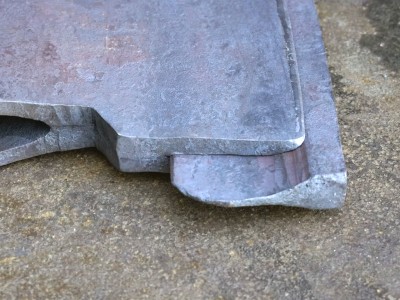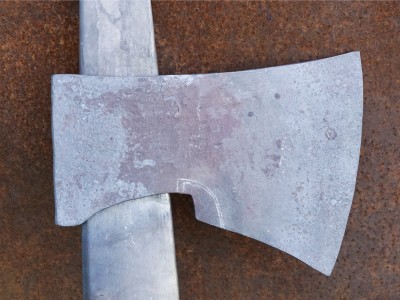
Forging Study: 5″ Norwegian Carpenter Axe
On May 15, 2018 by jaustinOn my most recent trip to Norway in May, 2017 I got to meet with the eminent traditional house builder and author Henning Olstad. Besides visiting his beautiful farm I had the opportunity to study several of the axes that he uses everyday to build houses in the many traditions of Norway. One commonly used axe was simply designated as a “5 inch carpenter’s axe” and it seemed to me like a good model to learn more about Norwegian axe forging. I made tracings and took pictures of this axe, and asked Henning to explain some of the characteristics which were important to its performance. In addition to all this I had recorded the forging of an almost identical axe in Norway by the blacksmith Øystein Myhre 2015 at his beautiful smithy in Sandefjord.
Based on this information I began my first trial-forging of this axe in April. The goal was to record carefully the process of forging a fairly close rendition of Henning’s axe so that my follow-up versions could “hit the mark” – so to speak. It turns out that I got quite close with this first version, and I am very happy with it! If anything it came out a little bit larger than intended (5.75″ edge vs. the goal of 5.0″, and 1.8 kg. vs. the goal of about 1.65 kg.) I have already started another 5″ axe and downsized the starting materials for it about 10% to aim for the lower weight. Hopefully the next one will look as nice as I think this one does!

















Predictably beautiful work. It’s a joy to see this traditional work developed here in our back yard, and done so well. Your work and curiosity makes the Bay Area a better place. Thanks!
Thanks for your support Mike! In truth I admire you as a craftsman and a friend.
Thanks, Jim, sort of. Nice work as usual, very illuminating explanation and pics, but now I’m salivating for a tool, or one of your classes.
It’s very nice to hear from you William! No need to salivate – come by and say hi sometime!
Thank you Jim,
When you are preparing for fitting the bit into the front edge how are you cutting the slot in the 1075 shims that have been welded in to form the lips of the cleft?
The blending of mild steel to 1075 to W1 is good info, thanks again for sharing.
Hello Mark: On that axe I cut the slot for the bit with my bandsaw (it took awhile). Although I was essentially cutting through the 1075 bit it was totally annealed and was no problem at all. Someday I will come up with a hotwork solution to that step, but sawing made sense at the time. Thanks for your interest! Jim.
These axes look incredible. Thanks for sharing!